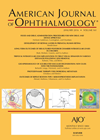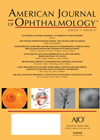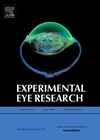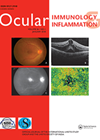You searched for "Simulation"
OCT angiography and retinal vein occlusions
1 April 2016
| Efrosini Papagiannuli
|
EYE - Vitreo-Retinal
In this retrospective, observational case series, the authors set out to evaluate the morphology of the superficial and deep capillary plexa of eyes that suffered a retinal vein occlusion (RVO) on OCT angiography (OCTA) and compare the findings with fluorescein...
Intraoperative floppy iris syndrome and prevalence of intraoperative complications
Alpha-blockers (particularly of the selective type) are known to be associated with intraoperative floppy iris (IFIS) and poor dilation, which can present in various severities during cataract surgery and need to be recognised in order to avoid intraoperative complications. Methods...Transfected RPE cells inhibit AMD in rats
1 August 2015
| Graham Wallace
|
EYE - Vitreo-Retinal
Age-related macular degeneration (AMD) is a leading cause of blindness in the elderly. Wet AMD is characterised by choroidal neovascularisation, new vessels into the retina, leading to leakage and tissue damage. Many proangiogenic factors particularly vascular endothelial growth factor (VEGF)...
Management of proliferative diabetic retinopathy
1 August 2014
| Felicity Allen, Samantha S Mann
|
EYE - Vitreo-Retinal
Diabetic retinopathy is a major cause of blindness in the working-age population. Due to the worsening global epidemic of diabetes, the incidence of morbidity caused by the disease is set to increase [1]. The prevalence of diabetes in the UK...
How does a tablet based stereoacuity test perform in children with normal and abnormal visual acuity?
2 October 2025
| Lauren R Hepworth
|
EYE - Paediatrics
The authors present a prospective cross-sectional comparison study at a single centre. Paediatric patients attending an ophthalmology outpatient clinic and likely to be cooperative were approached to participate. Participants underwent stereoacuity assessment using the ASTEROID and Titmus tests, usually in...
An Inconvenient Truth: Pete’s hidden curriculum Part 4
5 June 2023
| Peter Cackett
|
EYE - General
“What gets us into trouble is not what we don’t know. It’s what we know for sure that just ain’t so.” The above is a quote attributed to Mark Twain from the 2006 documentary, An Inconvenient Truth, which follows Al...
Cutting-edge practice in glaucoma care: what, how and why?
1 April 2016
| Nick Strouthidis, Winifred Nolan, Keith Barton
|
EYE - Glaucoma
More effective treatments and drug delivery modalities, implantable minimally invasive glaucoma surgical (MIGS) devices, as well as accelerating clinical research programmes, will transform the surgical and clinical management of glaucoma in the near future. There is also an ever-greater emphasis...
Optometry Today’s new essential guide for myopia management
Optometry Today (OT) has published the second edition of its myopia management guide.Commonwealth nations join forces to prevent blindness from diabetes
1 February 2015
| Sophie Poore, Allen Foster (Prof), Marcia Zondervan, Denise Mabey, Claire Walker, Nick Astbury
|
EYE - Cataract, EYE - Cornea, EYE - Glaucoma, EYE - Imaging, EYE - Neuro-ophthalmology, EYE - Oculoplastic, EYE - Oncology, EYE - Orbit, EYE - Paediatrics, EYE - Pathology, EYE - Refractive, EYE - Strabismus, EYE - Vitreo-Retinal, EYE - General
More than 70 representatives from 10 Commonwealth countries (in the African, Caribbean and Pacific regions) and Indonesia gathered at a five-day workshop in November 2014 to establish district or national plans to reduce blindness from diabetic retinopathy (DR). The event...
Seeing with fresh eyes: Snails as a system for studying sight restoration
Stowers scientists have established the apple snail as a new research organism for investigating eye regeneration, which may hold the key for restoring vision due to damage and disease. Snails are slimy, simple creatures yet one species, the apple snail,...Binocular single vision (BSV)
3 April 2023
| Ali Yagan
|
EYE - General
Introduction In this article I will try to summarise some of the definitions, tests and assessments performed in the strabismus clinic to assess patient binocular potential. This is a key feature of strabismus assessment, especially in adults, and it will...
Bandage contact lens cultures after corneal collagen cross-linking
1 August 2016
| Saruban Pasu
|
EYE - Cornea, EYE - General
|
Bacterial contamination, contact lens, corneal collagen cross-linking, keratoconus, photorefractive keratotomy
Corneal collagen cross-linking (CCL) is a treatment modality that has been shown to stop the progression of keratoconus. There have also been reports that CCL acts as an antimicrobiologic agent in treating resistant microbial keratitis. This study aimed to investigate...








